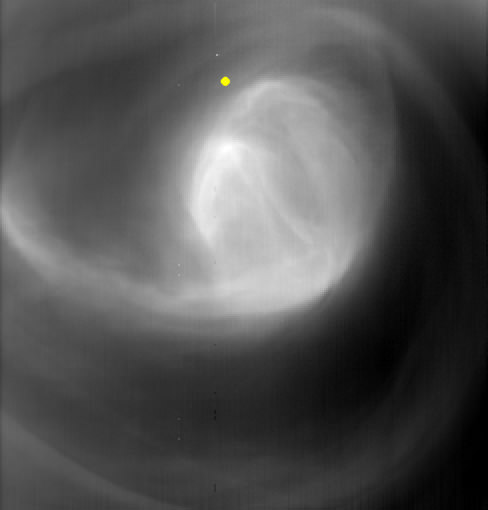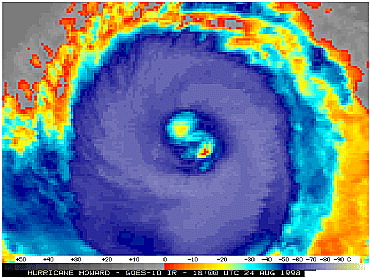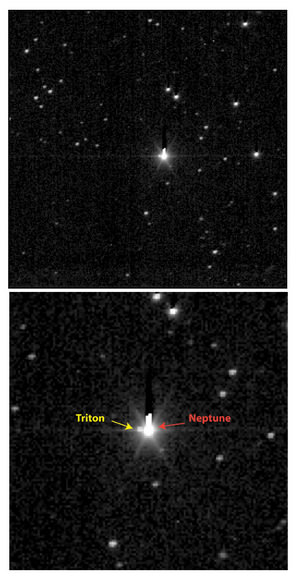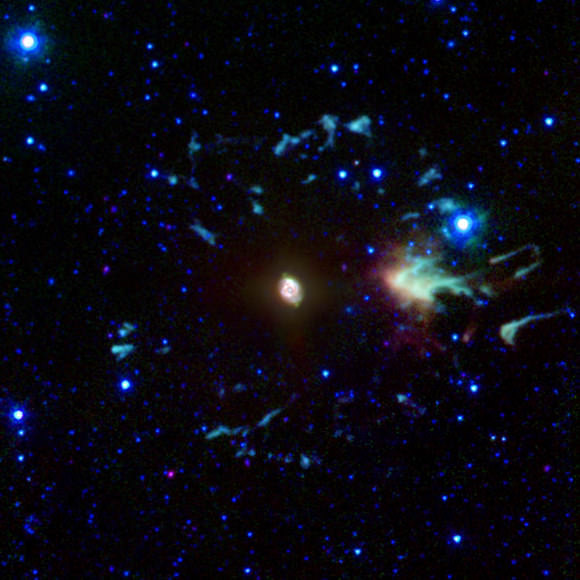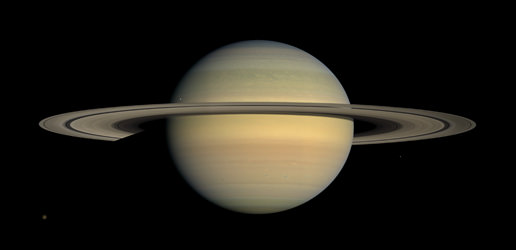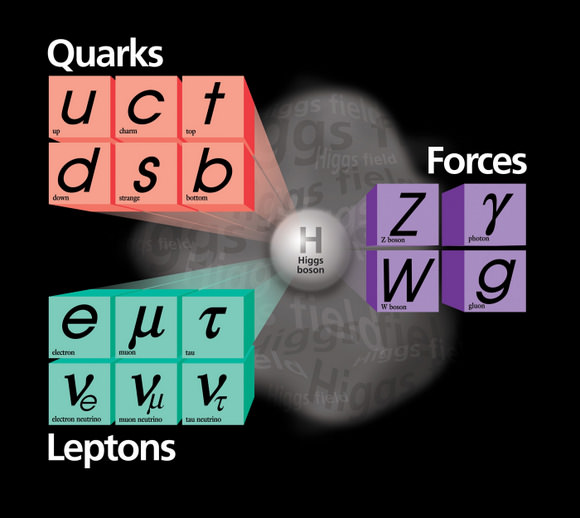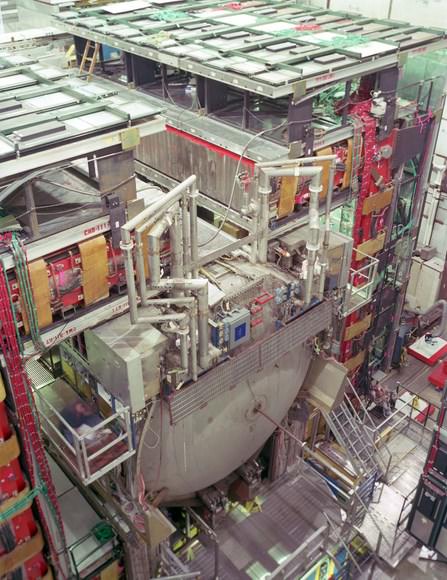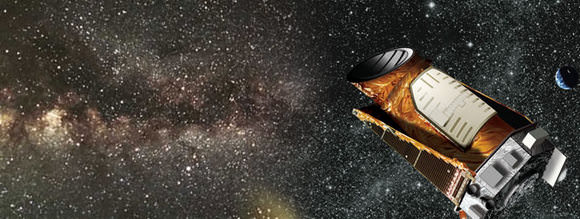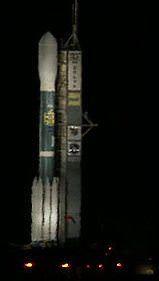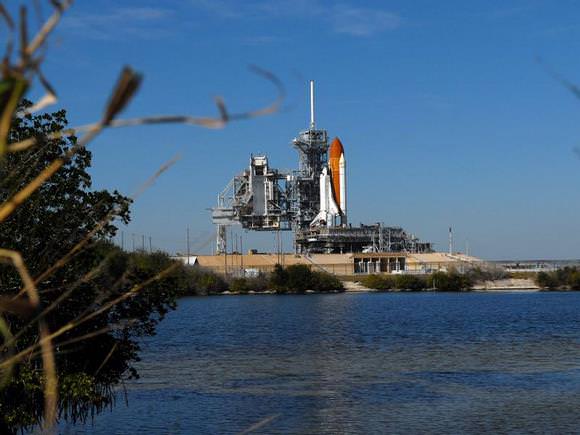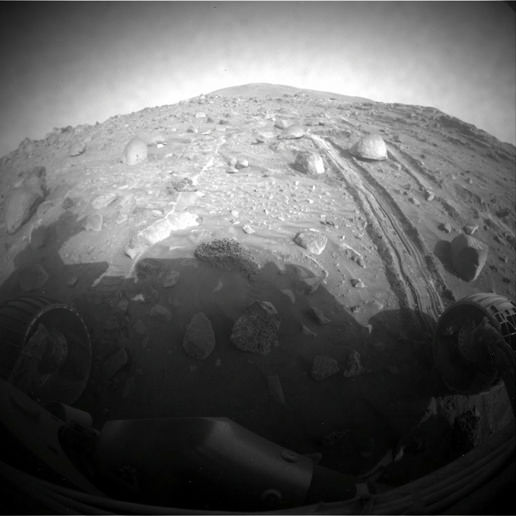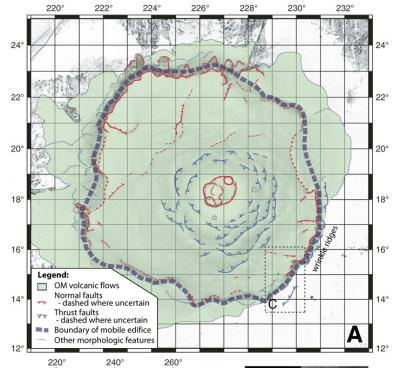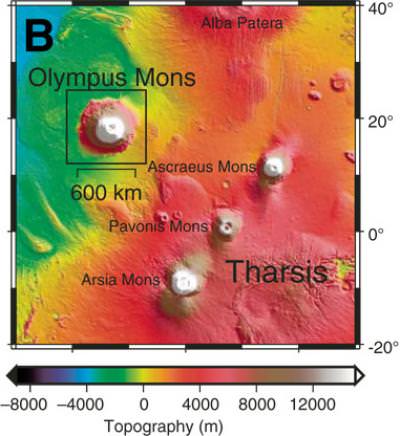Scientists have spotted an S-shaped feature in the center of the vortices on Venus that looks familiar — because they’ve seen it in tropical cyclones on Earth.
Researchers from the United States and Europe spotted the feature using NASA’s Pioneer Venus Orbiter and The European Space Agency’s Venus Express. Their new discovery confirms that massive, swirling wind patterns have much in common where they have been found — on Venus, Saturn and Earth.
At cloud top level, Venus’ entire atmosphere circles the planet in just about four Earth days, much faster than the solid planet does. Despite this “superrotation,” some dynamical and morphological similarities exist between the vortex organization in the atmospheres of Venus’s northern and southern hemispheres and tropical cyclones and hurricanes on Earth.
Organization of the Venus atmospheric circulation into two circumpolar vortices, one centered on each pole, was first deduced more than 30 years ago from Mariner 10 ultraviolet images. The S-shaped feature in the center of the vortices on Venus was first detected by the Pioneer Venus Orbiter near the northern pole and recently by Venus Express orbiter around the southern pole. It is also known to occur in Earth’s tropical cyclones.
Using an idealized nonlinear and nondivergent barotropic model, lead author Sanjay S. Limaye, of the University of Wisconsin-Madison, and his colleagues are proposing that these S-shaped features are the manifestations of barotropic instability. The feature can be simulated with a barotropic model and, like in the vortices on Venus and in tropical cyclones, it is found to be transient.
Another similarity between the observed features in the vortex circulations of Venus and in terrestrial hurricanes is the presence of transverse waves extending radially outward from the vortex centres. The lack of observations of such features in Earth’s polar vortices is suggestive that the dynamics of the Venus polar vortices may have more in common with hurricanes than their more direct terrestrial counterparts.
Given the challenges in measuring the deep circulation of Venus’s atmosphere, the authors expect that the morphological similarities between vortices on Earth and Venus might help scientists better understand atmospheric superrotation on Venus and guide future observations.
IMAGE CAPTIONS: 1. The ‘eye of the hurricane’ on Venus, taken by the Visible and Infrared Thermal Imaging Spectrometer (VIRTIS) on board Venus Express. The yellow dot represents the south pole. Credit: ESA 2. An infrared satellite image of Hurricane Howard [1998], showing an S-shaped pattern in the low (warm) clouds in the tropical cyclone’s eye. Credit: Sanjay S. Limaye.
Source: Geophysical Research Letters

